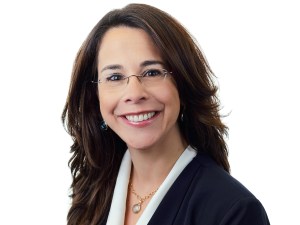Resetting Real Estate Investment to a Sustainability-First Mindset
Climate change and climate risk are increasingly becoming value issues, according to JLL's Lori Mabardi.

Lori Mabardi
In his latest annual letter, Blackrock CEO Larry Fink emphasized that the long-term value of a company depends on how “effectively you navigate the global energy transition in the years ahead.” As sustainability becomes a top agenda item for investors in real estate, Fink is in good company: Of the nearly 1,000 executives surveyed by JLL in 2021, 83 percent of occupiers and 78 percent of investors believe that climate risk is financial risk.
Real estate accounts for almost 40 percent of global emissions, and, in some cities, the built environment contributes as much as 60-70 percent. Today, real estate investors have become key agents in driving ESG action—and need to do so while keeping an eye on value creation and value preservation.
According to JLL, evidence is mounting that value is getting disrupted by, carbon emissions, occupant health, and climate risk and resilience, and that trend is likely to increase in the coming years.
Carbon Emissions
The data is clear: Buildings with green certifications, such as LEED or BREEAM “Outstanding,” have brought with them a green premium. In fact, buildings recorded rent premiums between 4 percent and 11 percent and enjoyed 100 percent pre-leasing, compared to just 50 percent for standard properties, according to a 2020 JLL study on buildings in Central London.
But the definition of “green” is evolving to include GHG emissions and carbon footprint, creating a step-change in how green properties are graded. Investors that start early lean into this energy transition and evaluate their asset’s performance against a net-zero pathway, thereby mitigating risk and getting ahead of a growing trend. Moreover, as regulatory pressure grows, the pace at which buildings must be decarbonized could increase, giving those that start early an advantage.
Real estate investors are becoming more carbon-conscious, and many have set their own net-zero goals, complying with regulatory mandates or responding to tenant demand—or a combination of all these factors. Investors are increasingly using the Carbon Risk Real Estate Monitor tool to track a building’s greenhouse gas emissions against its net-zero pathway. Early anecdotal evidence suggests that buyer pools are already shrinking if a seller shows less-than-flattering data about where a building might be on its net-zero trajectory.
Occupant Health
As organizations work to bring employees back to the office and others implement hybrid or remote working, we are all intimately aware of the critical role that buildings play in health and well-being. We now view health and wellness as beyond an amenity package, to include built-in building characteristics such as air quality, ventilation, water quality and more.
In fact, deploying healthy building strategies can lift a business’ bottom line by 7 percent to 11 percent, according to Dr. Joseph Allen at the Harvard T.H. Chan School of Public Health and his co-author John Macomber. Healthy building strategies can lead to higher engagement, higher productivity, better sleep and provide the workforce spaces within which to thrive.
Climate Risk and Resilience
Extreme climate events are becoming more frequent and intense. Investors are increasingly considering physical risk as part of the due diligence process, with 80 percent of leading investors considering climate risk and resiliency during acquisitions and development, according to a 2021 JLL report. This should become more mainstream as government entities continue to make climate risk reporting mandatory through frameworks like the Taskforce for Climate-Related Financial Disclosure. In light of this trend, insurers, lenders and corporates are expected to include physical climate risk considerations in decision-making over time.
Return on Sustainability
The data is clear: Green buildings, as we’ve defined them until now, have led to higher occupancy, rents, tenant retention and overall value. But a reset is underway. Carbon footprint matters, creating spaces to enable optimal human performance is critical and hardening real estate so it can weather storms and face other areas of climate risk is paramount.
We’ve entered a new era in real estate where assets that truly support people and planet will see maximum value—for investors and our global community alike.
Lori Mabardi is global research director of ESG & sustainability for JLL, and lead author of “Return on Sustainability: How the ‘value of green’ conversation is growing up”







You must be logged in to post a comment.